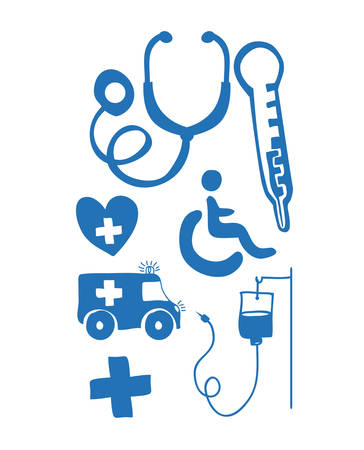Building Effective Communication Channels
Why Communication Matters
When working with children who need extra support, it’s important for therapists, teachers, and pediatricians to be on the same page. Clear communication helps everyone understand the child’s strengths, challenges, and progress. This teamwork ensures that interventions at school, home, and during therapy sessions are consistent and effective.
Strategies for Open and Ongoing Communication
Creating strong communication channels doesn’t have to be complicated. Here are some practical ways to keep everyone connected:
| Strategy | Description | Tips for Success |
|---|---|---|
| Regular Team Meetings | Set up scheduled meetings with all professionals involved in the child’s care. | Use video calls or in-person meetings; create a shared agenda beforehand. |
| Shared Digital Platforms | Use secure online tools to share updates, documents, and progress reports. | Google Drive or school-approved apps can make information accessible to all. |
| Email Updates | Send brief email summaries after sessions or key events. | Keep messages clear and focused; highlight important changes or achievements. |
| Communication Logs | Maintain a shared logbook or online record of observations and actions taken. | Update regularly; use it as a quick reference during meetings. |
| Parent Involvement | Include parents in communication loops so they feel informed and empowered. | Invite them to meetings; encourage questions and feedback. |
The Role of Each Professional
Pediatricians: Provide medical insights and help monitor overall health.
Teachers: Share daily observations from the classroom.
Occupational Therapists: Give updates on therapy goals, challenges, and achievements.
Together: Everyone brings their own perspective to create a complete picture of the child’s needs.
Troubleshooting Common Challenges
If communication stalls or misunderstandings arise, try setting up more frequent check-ins or using different methods (like phone calls instead of emails). Remind everyone that the goal is supporting the child’s growth together.
Role Clarification and Shared Goals
When supporting a child’s development, it’s important for everyone involved—teachers, occupational therapists (OTs), and pediatricians—to clearly understand their unique roles. Defining these roles helps prevent confusion, overlaps, or gaps in care. It also encourages open communication and teamwork. Let’s look at what each professional brings to the table:
| Professional | Main Role | Key Responsibilities |
|---|---|---|
| Teacher | Academic and Social Development | Supports learning, observes classroom behavior, adapts teaching strategies, communicates concerns to team |
| Occupational Therapist (OT) | Functional Skills Development | Assesses motor skills, creates interventions for daily activities (writing, self-care), collaborates on accommodations |
| Pediatrician | Medical Oversight | Monitors overall health, diagnoses medical/behavioral conditions, refers to specialists as needed |
Why Clear Roles Matter
When everyone understands their own responsibilities—and those of others—they can work together more effectively. For example, a teacher might notice a student struggling with handwriting and talk to the OT about possible interventions. The pediatrician can provide medical insights that help shape classroom or therapy plans.
The Power of Shared, Child-Centered Goals
It’s not just about knowing your job—it’s about coming together around what’s best for the child. Setting shared goals means everyone is moving in the same direction. These goals focus on the child’s strengths and needs and put their well-being first.
How to Create Shared Goals
- Hold regular team meetings: Gather input from each professional and from the family.
- Use clear language: Make sure everyone understands what success looks like for the child.
- Create actionable steps: Break down big goals into small, achievable actions that fit each role.
- Check in often: Review progress and make adjustments as needed.
Example of a Shared Goal in Action:
If a goal is “improve participation in classroom activities,” the teacher can offer modified assignments, the OT can provide exercises for fine motor skills, and the pediatrician can ensure there are no underlying health issues affecting participation. This coordinated approach makes care more effective and meaningful for the child.

3. Integrating Classroom and Therapy Strategies
Why Integration Matters
When teachers, occupational therapists, and pediatricians work together, it makes a big difference in how children grow and learn. By blending therapy strategies into everyday classroom routines, we help kids practice important skills throughout the day, not just during special therapy sessions.
Simple Ways to Blend Therapy and Learning
Here are some effective methods for making therapy recommendations a natural part of the school day:
| Strategy | How It Works in Class | Who Helps |
|---|---|---|
| Flexible Seating Options | Use wobble stools or cushions to support focus and posture. | Teacher & Occupational Therapist |
| Sensory Breaks | Add short movement activities between lessons to help with attention. | Teacher & OT |
| Fine Motor Stations | Include playdough or bead stringing in activity centers for hand skills. | Teacher & OT |
| Visual Schedules | Post step-by-step charts for routines like washing hands or packing up. | Teacher & Pediatrician (as needed) |
| Peer Support Partners | Pair students to encourage social skills and cooperation during group work. | Teacher & Pediatrician (guidance) |
Tips for Consistency Across Settings
- Weekly Check-Ins: Short meetings between teachers and therapists keep everyone on the same page.
- Email Updates: Quick notes about what’s working (or not) help tweak strategies fast.
- Shared Goal Setting: Involving families ensures support at home matches school efforts.
- Simplify Instructions: Use clear, repeatable language so children know what to expect everywhere.
The Power of Teamwork
No one works alone—collaboration means each expert brings their strengths. Teachers spot classroom needs, occupational therapists suggest hands-on strategies, and pediatricians offer medical insights. Together, they make sure every child has the best chance to succeed both in therapy and in daily classroom life.
4. Utilizing Multidisciplinary Team Meetings
Why Regular Team Meetings Matter
When helping a child with special needs, working together is key. Multidisciplinary team meetings bring teachers, occupational therapists, pediatricians, and sometimes parents into the same room. These meetings make sure everyone is on the same page and can share their unique insights. By talking regularly, the team can solve problems quickly and adjust plans as needed to support the child’s growth.
What Happens in an IEP Meeting?
In the United States, many schools use an Individualized Education Program (IEP) for children who need extra help. An IEP meeting is a special type of team meeting focused on setting goals and tracking progress. Here’s what usually happens in an IEP meeting:
| Who Attends | Their Role |
|---|---|
| Teacher | Shares classroom observations and updates on academic progress |
| Occupational Therapist | Explains therapy goals and how they relate to daily school activities |
| Pediatrician or School Nurse | Discusses medical needs that may affect learning or participation |
| Parents or Guardians | Share insights from home and ask questions about their child’s development |
| Special Education Coordinator | Leads the meeting and ensures all legal requirements are met |
Benefits of Collaborative Problem Solving
When everyone shares information, it’s easier to spot patterns and find solutions that work in both school and at home. For example, if a teacher notices a child struggles with writing, the occupational therapist can suggest specific exercises. The pediatrician might explain any medical issues that could play a role. Together, they create a plan that fits the child’s unique needs.
Tracking Progress Over Time
Regular meetings let the team check how well strategies are working. If something isn’t helping, they can quickly try something new. This ongoing communication helps everyone stay informed and motivated to help the child succeed.
5. Engaging Families in Collaborative Care
Why Family Involvement Matters
When it comes to supporting a child’s development, families are at the heart of any successful collaborative team. By working together with teachers, occupational therapists, and pediatricians, families can help bridge the gap between what happens in school or therapy and what happens at home. This partnership ensures that strategies are consistent, practical, and respectful of each family’s unique background.
Ways to Involve Families in the Process
Effective collaboration starts with open communication and mutual respect. Here are some key approaches for involving families:
| Approach | Description | Examples |
|---|---|---|
| Regular Communication | Keeping families updated on progress, challenges, and successes | Email check-ins, phone calls, parent-teacher meetings |
| Cultural Sensitivity | Respecting and understanding different cultural backgrounds and practices | Asking about family traditions, using interpreters if needed, adapting activities for holidays |
| Empowering Caregivers | Providing families with tools and knowledge to reinforce strategies at home | Home activity handouts, video demonstrations, hands-on workshops |
| Goal Setting Together | Involving families in setting realistic goals based on their priorities and values | Family interviews, joint goal planning sessions, feedback forms |
| Flexible Scheduling | Offering meeting times and support that fit family routines | Evening webinars, weekend appointments, telehealth options |
Cultural Respect in Family Collaboration
Recognizing and honoring the cultural diversity of American families is key. Some families may have different expectations for child development or prefer traditional remedies. Open conversations about these beliefs help build trust. It’s important to listen actively and work together to blend professional recommendations with family values.
Tips for Culturally Responsive Collaboration:
- Avoid assumptions—ask questions about family preferences and routines.
- Use plain language; avoid medical jargon.
- If needed, provide translated materials or interpreter support.
- Acknowledge and celebrate cultural holidays or special events in your planning.
- Be patient as families adjust to new strategies or information.
Empowering Families at Home
The best outcomes happen when caregivers feel confident applying strategies outside of therapy or school. Professionals can help by demonstrating activities during visits or creating simple step-by-step guides for home use. Encouraging families to share what works—and what doesn’t—creates a supportive environment where everyone learns together.


